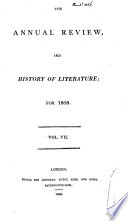 | William Nicholson - 1810 - 844 pages
...relative weights ol' the ultimate particles, both of simple •' and compound bodies, the number of simple elementary " particles* which constitute one compound...into the " formation of one more compound particle." He then goes on to state, that when two bodies A and B are disposed * I hope I shall not be thought... | |
 | Arthur Aikin - 1809 - 832 pages
...weights of the ultimate particles, both of simple and compound bodies, the number of simple element^ particles which constitute one compound particle,...number of less compound particles which enter into the formaaoa of one more compound particle." He begins by hiving down aseries of propositions concerning... | |
 | 1812 - 528 pages
...relative weights of the ultimate particles, both of simple and compound bodies, the number of simple elementary particles which constitute one compound...number of less compound particles which enter into the composition of one more compound particle." But if our astonishment was great at the grandeur of the... | |
 | Charles Daubeny - 1831 - 226 pages
...relative weights of the ultimate particles, both of simple and compound bodies; the number of simple elementary particles which constitute one compound...into the formation of one more compound particle." To illustrate these views, he has placed at the end of his volume a plate, in which thirty-seven bodies,... | |
 | John Frederic Daniell - 1839 - 606 pages
...particles, both of simple and compound bodies, the number of simple elementary particles irhiclt contt/tiite one compound particle, and the number of less compound...more compound particle. " If there are two bodies, x and n, which arc disposed to combine, the following is the order in which the combination may take... | |
 | 1846 - 608 pages
...of the ultimate particles both of simple and compound bodies, the number of simple elementary bodies which constitute one compound particle, and the number...into the formation of one more compound particle." Here is expressed with the greatest ease all that was wanted. The succession of his investigations... | |
 | 1845 - 612 pages
...relative weights of the ultimate particles, both of simple and compound bodies, the number of simple elementary particles which constitute one compound...which enter into the formation of one more compound panicle." In the second volume of his work, published in 1810, he confirmed these views by facts derived... | |
 | John Holmes Agnew, Walter Hilliard Bidwell - 1846 - 620 pages
...particles both of simple and compound bodies, the number of simple elementary bodies which consti-j lute one compound particle, and the number of less compound...into the formation of one more compound particle." Here is expressed with the greatest ease all that was wanted. The succession of his investigations... | |
 | Henry Allon - 1851 - 604 pages
...relative weights of the ultimate particles, both of simple and compound bodies; the number of simple elementary particles which constitute one compound...compound particles which enter into the formation of one or more compound particle. ' To illustrate these views, he has placed at the end of his volume a plate,... | |
 | Robert Routledge - 1881 - 748 pages
...compound bodies, the number of simple elementary particles -which constitute the compound particles, and the number of less compound particles which enter...formation of one more compound particle. " If there be two bodies, A and B, which are disposed to combine, the following is the order in which the combination... | |
| |